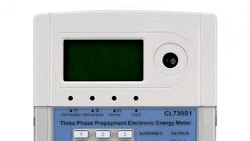Concrete, a ubiquitous building material, has proven to be a versatile resource in many construction applications. In recent years, researchers and engineers have discovered new and exciting ways to utilize concrete for energy storage purposes. In this article, we explore three pioneering energy storage principles centred around concrete: Concrete as a Supercapacitor, Thermal Energy Storage, and Gravity Energy Storage using Concrete Blocks.
Concrete as a Supercapacitor
In July 2023, researchers at the Massachusetts Institute of Technology (MIT) introduced a groundbreaking concept by infusing concrete with a mixture of cement and charcoal powder to create a supercapacitor-like material. This novel approach enables concrete foundations to store an amount of electrical energy and discharge it rapidly, rivalling the capabilities of traditional batteries.
The ideas for potential applications of this technology are vast:
- In Buildings
Concrete foundations of buildings could double as energy storage units, helping manage peak energy demands and reduce strain on the power grid during high-consumption periods. - Wind Turbines
Incorporating supercapacitor concrete in the base of wind turbines allows them to store excess energy generated during windy periods and release it when the wind slows down, ensuring a steady and reliable energy supply. - Electric Vehicle Charging
Roads constructed with supercapacitor concrete could wirelessly recharge electric vehicles as they drive along, eliminating the need for traditional charging stations and revolutionizing transportation.
Personal Estimation
In my opinion, the article of the MIT team led by Franz-Josef Ulm is definitely worth reading. The concept they presented is intriguing, although I noticed that to store 10 kWh of electrical energy, a significant amount of 45 cubic meters of the special carbon-concrete mix is required. Additionally, considering that this material cannot be reinforced with steel, its direct application in building construction seems challenging.
Moreover, I believe that proper isolation from the ground would be necessary to prevent any potential environmental discharge due to water or humidity. Despite these concerns, I'm still eager to keep track of further developments with interest.

(credit Pexels)
Thermal Energy Storage: Storing Heat with Concrete
Thermal Energy Storage (TES) with concrete is another innovative concept. This technique involves using resistive heating elements or other methods to raise the temperature of concrete during periods of excess electrical energy. The stored heat can then be used later to generate electricity or provide space heating when demand is high or when renewable energy sources are not available.
Key features of Thermal Energy Storage with concrete include:
- High Heat Capacity
Concrete's high heat capacity allows it to store significant amounts of energy in the form of heat. - Slow Heat Release
The low thermal conductivity of concrete helps minimize heat loss, allowing stored energy to be preserved for extended periods. - Scalability
The system can be scaled up depending on the required storage capacity.
TES with concrete finds applications in:
- Grid Stabilization
By storing excess energy during off-peak hours and releasing it during peak demand, it helps stabilize the electricity grid. - Renewable Energy Integration
TES facilitates the integration of intermittent renewable energy sources like solar and wind into the grid, smoothing out fluctuations in energy supply.
Personal Estimation
From my perspective, EnergyNest, a prominent Norwegian company in this field, has made significant strides. Having established themselves as a startup in 2011, they have already deployed thermal battery storage facilities in Abu Dhabi, boasting an impressive 3 MWh storage capacity within a 40 ft container. While I lack comprehensive technical details regarding charge/discharge rates and losses at the moment, the overall concept appears promising and holds potential for specific applications.
Gravity Energy Storage with Concrete Blocks
Gravity storage presents a compelling and innovative approach in the domain of energy storage solutions. This concept involves harnessing excess electricity to lift substantial objects, such as concrete blocks, to elevated positions, thereby converting electrical energy into potential energy. In times of heightened energy demand, these blocks are then lowered, allowing the stored potential energy to be converted back into electricity using generators. This scalable and long-duration storage method offers exciting prospects for grid stabilization and the seamless integration of renewable energy sources.
Gravity Energy Storage applications bear resemblance to thermal systems; however, they boast a distinctive edge by virtue of their long duration storage capabilities and higher storage capacities. Such attributes render them exceptionally valuable for implementing grid-level storage solutions.
Personal Estimation
Based on the available information, it is evident that gravity storage exhibits substantial potential as a viable option for large-scale energy storage solutions. Companies like EnergyVault in Switzerland and Gravitricity in Scotland have demonstrated commercial applications, indicating a growing interest in this technology. With typical round-trip efficiencies ranging from 70 % to 85 %, these systems offer an efficient way to convert potential energy into electricity.
Moreover, the ability to design systems capable of storing hundreds of megawatt-hours (MWh) or even gigawatt-hours (GWh) of electrical energy makes them well-suited for addressing the needs of large-scale energy storage demands.
Takeaway
Concrete, an elemental component within the construction domain, has notably emerged as a formidable asset in the pursuit of effective and ecologically sound energy storage remedies. Whether serving as a reservoir for thermal energy or capitalizing on the latent energy potential intrinsic to concrete blocks, these inventive paradigms hold transformative capacities for the landscape of power generation, storage, and utilization.
Anticipating the ongoing advancement within research and development, the trajectory suggests potential enhancements not only for the carbon-concrete supercapacitor, but also across the spectrum of concrete-based energy storage innovations.
As an established energy services provider, CLOU predominantly leverages the power of electrical energy storage systems that utilize advanced battery technologies. These systems form the backbone of our energy management and distribution solutions, providing reliable, efficient, and scalable storage capabilities tailored to meet our clients' diverse needs.
However, at CLOU, we believe in innovation and the continuous pursuit of knowledge to advance our service portfolio. As such, our dedicated research and development team is not only focused on improving our existing battery-based solutions, but also actively engaged in investigating alternative energy storage methodologies.
This investigative work includes examining the potential and the practicality of different energy storage technologies, their performance parameters, efficiency metrics, and sustainability considerations.
For any inquiries concerning our energy storage systems, please do not hesitate to get in touch with us. We welcome your feedback and encourage you to leave a comment if you wish to share your thoughts.
Editor's note: This article was originally published in August 2023 and has been updated for comprehensiveness.





All comments are moderated before being published. Inappropriate or off-topic comments may not be approved.